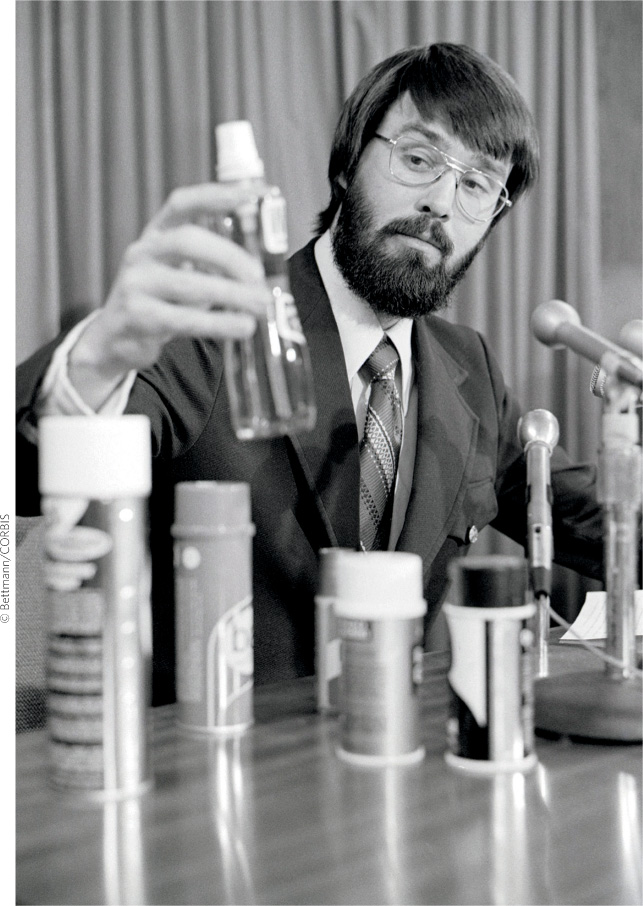Multiple ozone depletion hypotheses were tested but only the CFC hypothesis was confirmed.
Solomon and her team reported their evidence to the international scientific community by publishing their results in the peer-reviewed journals Nature and the Journal of Geophysical Research in 1987. Prior studies had already presented evidence that CFCs were present in the stratosphere, and lab studies showed that they were capable of destroying ozone. Now, Solomon and her team were presenting evidence that, at the time of year when ozone was dropping, the Antarctic stratosphere contained high levels of ClO, demonstrating that free chlorine atoms were reacting with ozone.
The evidence was amassing that CFCs were contributing to ozone depletion, but that didn’t mean the other hypotheses would be immediately abandoned. Research on those alternative hypotheses continued, but scientists were not finding evidence to support the predictions of the other hypotheses. If lower, ozone-poor air was lifting and mixing with the stratosphere, then researchers should observe gases moving upward in the atmosphere. Instead, they saw the opposite: Air seemed to be flowing downward. If solar activity was creating nitrogen oxides (NOx) that were destroying ozone, as NASA modeler Newman had once believed, then scientists should have observed increases in NOx at the South Pole. But when they took measurements, they found that NOx levels were actually decreasing. This observation provided further support for Solomon’s hypothesis, which predicted that NOx levels should be low, not high—because otherwise NOx would combine with ClO molecules and prevent them from interacting with ozone. The multiple lines of evidence collected for more than 30 years are so compelling that they have elevated the “CFC hypothesis” to the status of theory.
KEY CONCEPT 2.7
Scientists statistically evaluate data to assign a degree of certainty (known as a p-value) to their conclusions.

As mentioned earlier, in science there are degrees of certainty; we know some things better than others. The more evidence we have in support of an idea, especially from different types of experiments, the more certain we are that we are on the right track. These degrees of certainty are expressed mathematically in terms of probabilities, using statistics. A mathematical analysis of the data is done to determine the probability that the occurrence of a phenomenon (in this case, the experiment’s result) is a random event rather than being caused by the variable being investigated.
statistics
The mathematical evaluation of experimental data to determine how likely it is that any difference observed is due to the variable being tested.
This type of data analysis allows us to quantitatively assign a level of certainty to our conclusions. In statistics, this probability is expressed as a p-value that represents the likelihood that our conclusions are wrong. Scientists generally require a high probability (at least 95%) that their conclusions are correct. p ≤ 0.05 represents a level of certainty of 95%, and it means that there is only a 5% chance we have incorrectly accepted or rejected our hypothesis. The more evidence that accumulates in favor of a particular conclusion, the more certain we are that it is likely to be correct and can be used to inform our decisions. Just because we don’t know exactly what will happen if we continue to release CFCs into the atmosphere (including how fast the ozone layer will deplete or when it could jeopardize human health) doesn’t mean we don’t know enough to take action. (For more on statistics and experimental design, see Appendix 3.)
Indeed, the loss of ozone was starting to have effects in other places besides regions close to the Antarctic ozone hole. Other observational studies revealed that UV-B radiation levels were increasing in high- and midlatitude regions. Research by NASA scientists showed that the amount of UV-B radiation reaching the ground in the midlatitudes in the mid-1990s had increased over 1979 levels. Other research showed that UV-B radiation levels were 45% higher than normal in the spring of 1990 at the southern tip of Argentina.
In the meantime, skin cancer incidence has increased in human populations (as have other skin disorders and eye problems, such as cataracts), and other organisms are also affected by extra UV-B exposure. Photosynthesis rates in marine organisms such as the tiny phytoplankton of the Antarctic sea are lower than normal in the spring because of increased UV-B exposure—a troublesome fact since phytoplankton form the base of the Antarctic food chain. Decreases in photosynthesis are also troubling because they could lead to lower agricultural productivity and reduce the value of these areas as “carbon sinks”—areas where carbon is stored and kept out of the atmosphere. (See Chapter 21, on climate change.)